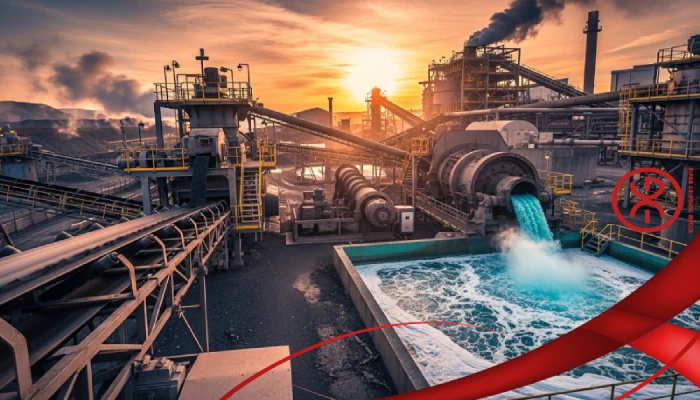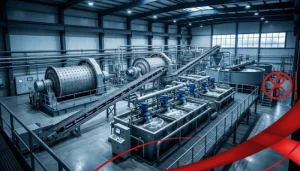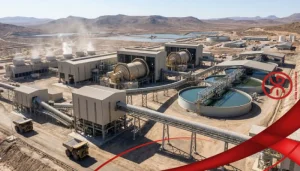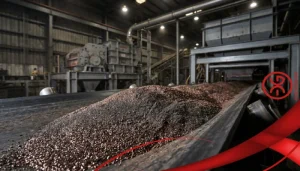Once ore is extracted from the earth, it undergoes a series of critical transformations to become valuable materials used in industries like mining, manufacturing, and construction. These ore processing steps are essential to convert raw ore into usable metals or minerals, ensuring efficiency and quality in the final product. For industry professionals seeking to understand or optimize these processes, this article from Alpha Grinding Media provides a comprehensive overview of the ore processing steps, from initial handling to final refinement, offering insights into techniques, challenges, and innovations.
Understanding Ore Processing and Its Importance
Ore processing begins the moment raw ore is mined, transforming it from a complex mixture of minerals into a refined product. The ore processing steps involve physical and chemical methods to separate valuable minerals from waste rock, preparing them for industrial use. These steps are crucial for maximizing resource recovery and minimizing environmental impact.
The importance of these steps lies in their ability to enhance the value of mined materials while ensuring efficient use of resources. Each stage, from crushing to final separation, is designed to isolate target minerals with precision. Alpha Grinding Media supports these processes by providing high-quality tools that improve efficiency in key stages of ore processing.
Initial Handling and Preparation of Ore
After mining, the first of the ore processing steps involves handling and preparing the ore for further treatment. Raw ore is transported from the mine to processing facilities, where it is sorted to remove large debris or unusable material. This initial stage ensures the ore is ready for subsequent mechanical breakdown.
Preparation often includes washing or screening to remove surface impurities like clay or soil, making the ore easier to process. Proper handling at this stage reduces equipment wear and sets the foundation for efficient processing. Alpha Grinding Media offers solutions that support smooth preparation, ensuring materials are primed for the next steps.
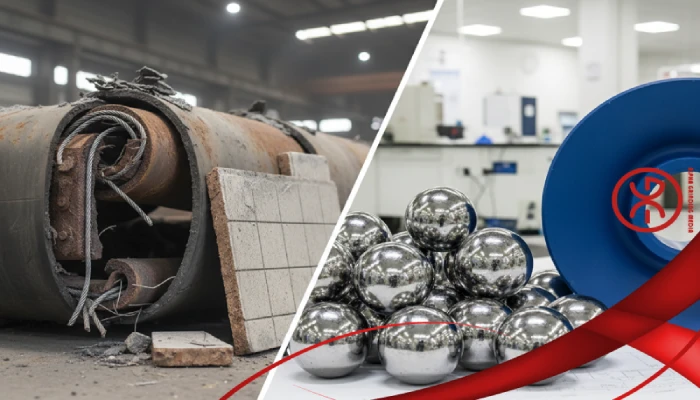
Crushing and Grinding in Ore Processing
Crushing and grinding are vital ore processing steps that reduce the size of ore particles to facilitate mineral liberation. Crushing breaks large ore chunks into smaller pieces using equipment like jaw crushers, preparing them for finer processing. This stage is critical for exposing valuable minerals trapped within the ore.
Grinding further refines the crushed ore into a fine powder, increasing the surface area for subsequent separation. This process relies on specialized equipment and media to achieve uniform particle sizes. Alpha Grinding Media provides durable grinding solutions that enhance the efficiency of this stage, ensuring optimal particle breakdown.
Screening and Classification of Ore Particles
Following grinding, screening and classification are key ore processing steps that sort particles by size and density. Screening uses vibrating screens to separate particles into different size fractions, ensuring only appropriately sized material proceeds to the next stage. This helps maintain consistency in processing.
Classification involves separating particles based on their behavior in liquids or air, often using equipment like hydrocyclones. This step ensures that finer particles are directed to specific processes, improving recovery rates. Alpha Grinding Media’s products are designed to support these stages, maintaining process reliability and quality.
Concentration Techniques in Ore Processing
Concentration is a core component of the ore processing steps, aimed at isolating valuable minerals from waste material. Methods like flotation, magnetic separation, and gravity separation are used to concentrate minerals based on their physical or chemical properties. Flotation, for instance, uses chemicals to make valuable minerals cling to air bubbles, separating them from waste.
These techniques require precise control to maximize recovery while minimizing loss of valuable material. Effective concentration enhances the efficiency of downstream processes, and Alpha Grinding Media offers tools that support consistent performance in these critical stages.
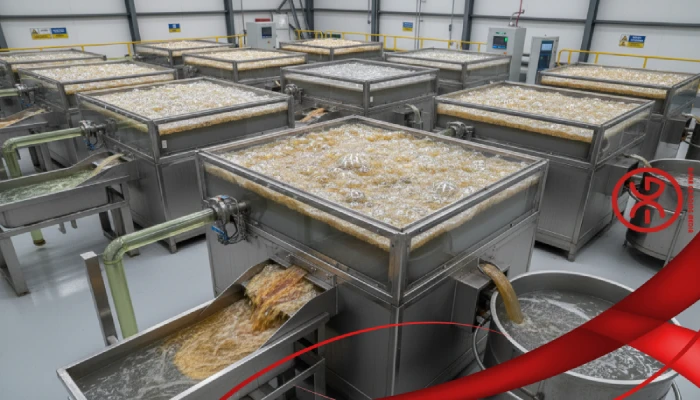
Chemical Processing and Leaching
Chemical processing, including leaching, is among the ore processing steps used to extract specific minerals, especially for metals like gold or copper. Leaching involves dissolving target minerals using chemical solutions, allowing them to be separated from the ore matrix. This method is highly effective for low-grade ores.
The process requires careful handling of chemicals to ensure safety and environmental compliance. Leaching can be followed by additional steps like precipitation to recover the dissolved minerals. Alpha Grinding Media supports these processes with reliable equipment components, ensuring smooth and safe operations.
Refining and Final Processing of Ore
The final ore processing steps involve refining the concentrated minerals into pure metals or usable products. Refining techniques, such as smelting or electrowinning, remove impurities to produce high-purity materials ready for industrial applications. Smelting, for example, melts concentrates to separate metals from residual waste.
This stage ensures the final product meets industry standards for quality and purity. It often involves additional treatments to enhance material properties. Alpha Grinding Media provides solutions that support the precision required in refining, helping industries achieve superior results.
Challenges in Ore Processing and Solutions
The ore processing steps face challenges like equipment wear, energy demands, and environmental concerns. Harsh conditions during crushing and grinding can degrade equipment, requiring robust materials to maintain efficiency. Additionally, complex ores with multiple minerals can complicate separation processes.
Solutions include using high-quality processing tools and optimizing each stage to reduce waste. Regular maintenance and process adjustments can address these challenges effectively. Alpha Grinding Media offers durable products and expert guidance to help professionals overcome these obstacles and improve operational outcomes.
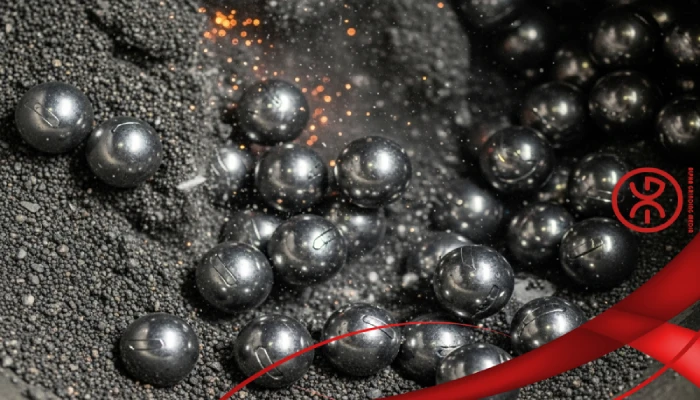
Conclusion
The ore processing steps are the backbone of transforming raw ore into valuable materials, driving efficiency and quality in industries like mining and manufacturing. From crushing and grinding to refining, each step plays a vital role in maximizing resource recovery and meeting industry standards. By optimizing these processes, professionals can achieve better outcomes and maintain competitive advantages.
For tailored advice on enhancing your ore processing steps or selecting the right tools, contact the support team at Alpha Grinding Media. Our experts are ready to provide solutions that improve efficiency and meet your specific processing needs.
Frequently Asked Questions
1. What is the primary purpose of the ore processing steps?
The ore processing steps aim to reduce the size of raw ore and separate valuable minerals from waste, preparing them for industrial use through crushing, grinding, and refining techniques.
2. Why is grinding a critical part of the ore processing steps?
Grinding breaks down ore into fine particles, increasing surface area for effective mineral separation, making it essential for achieving high recovery rates in subsequent processes.
3. What challenges are common in the ore processing steps?
Challenges include equipment wear, complex ore compositions, and environmental concerns, which can be addressed through durable tools and optimized process management.
4. How do innovations impact the ore processing steps?
Innovations like automated sorting and eco-friendly processes improve efficiency and sustainability, helping industries achieve better recovery with reduced environmental impact.

